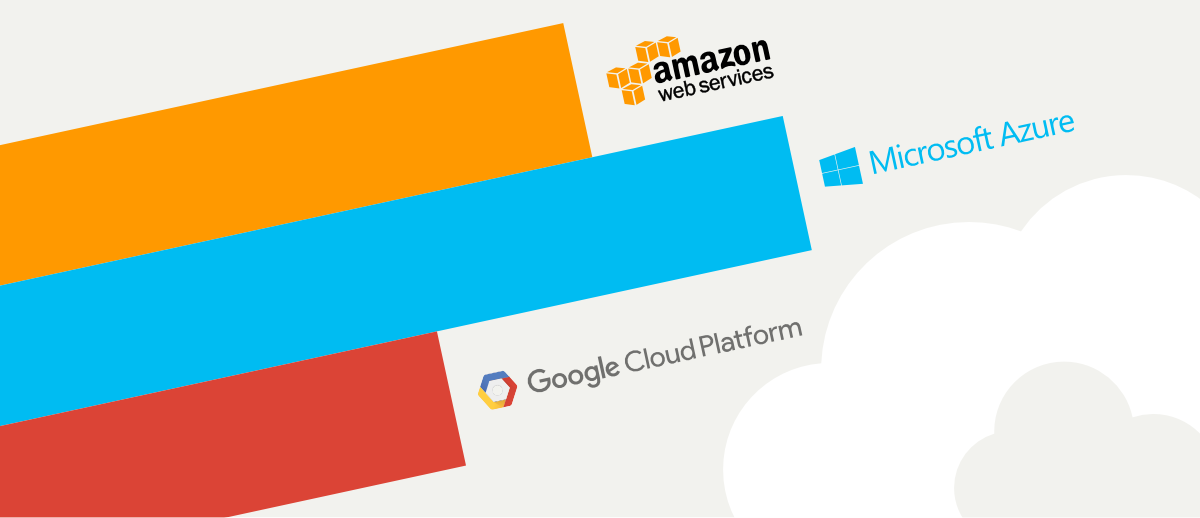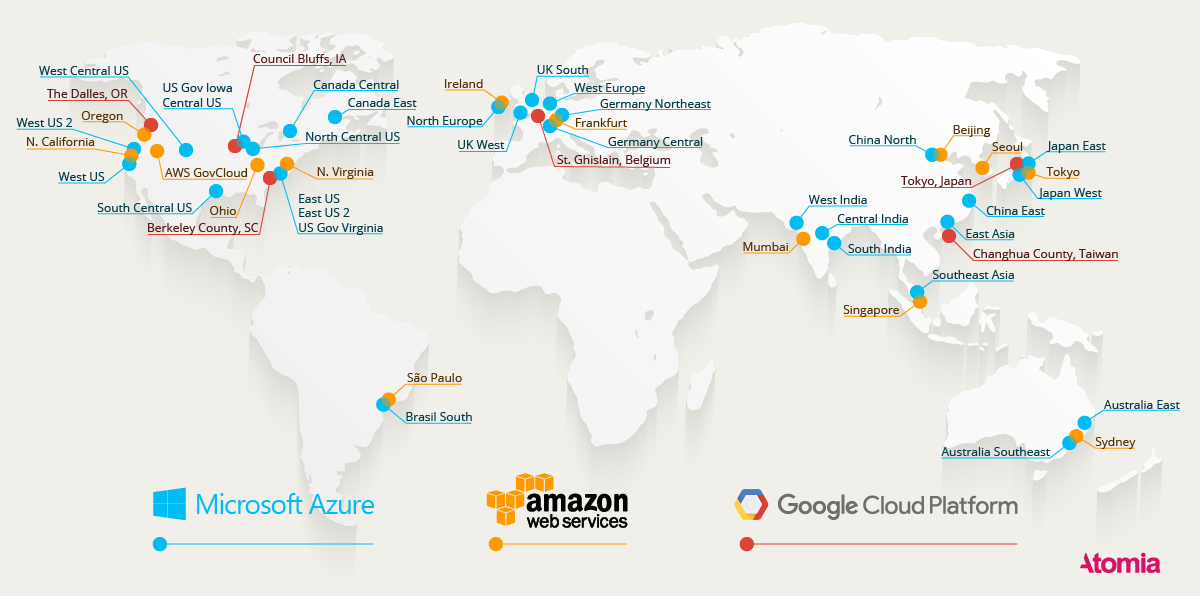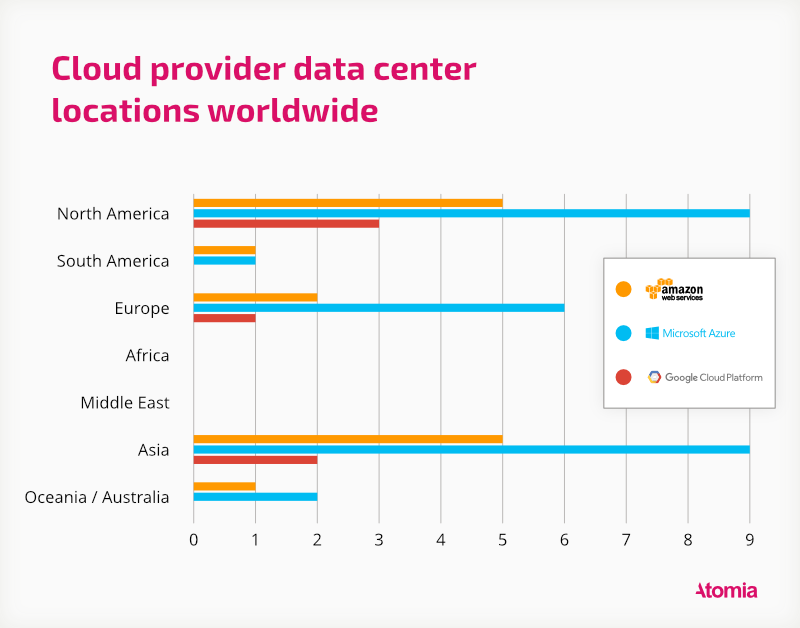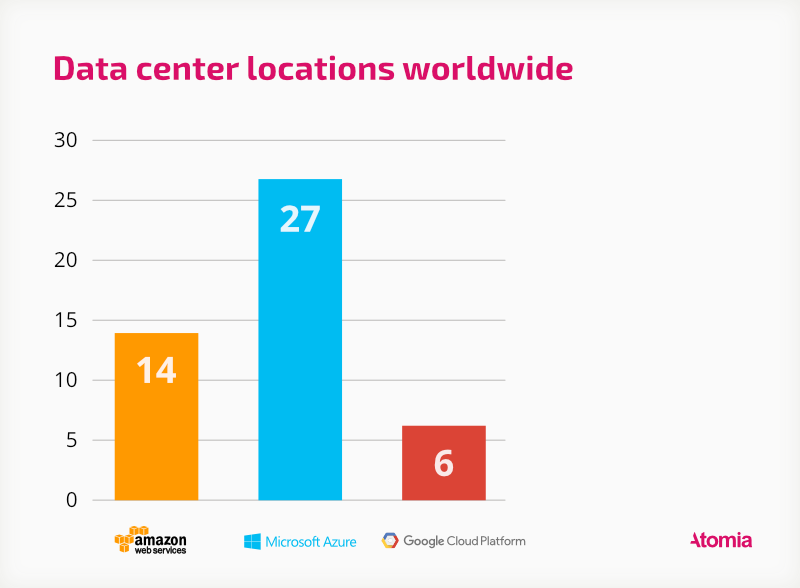
Comparing the geographical coverage of AWS, Azure and Google Cloud
Amazon Web Services was launched back in 2006, a move that has paid off handsomely for Amazon. The company now holds an estimated 31 percent of the cloud service market, which puts them firmly in the lead. However, Microsoft has been making great progress with Azure (launched in 2010), and Google began competing directly with them both when they launched Google Compute Engine (their Amazon EC2 equivalent) in late 2013.
In this article we’re going to take a close look at how these three compare in terms of geographical coverage, something bound to be an important factor for many people and businesses considering which one to use.
Geographical coverage at a glance
One of the big benefits of using a large public cloud provider is that you gain access to their global infrastructure and can easily create virtual servers in places close to your audience (or close to yourself). These three providers all have multiple data centers spread across the world, but as you will see below, they are not all equal in terms of coverage. Far from it.
For your viewing pleasure, we’ve put together an all-in-one map showing the various locations currently available from AWS, Azure and Google Cloud.

Our only criterion for a location being included was that it supports virtual servers (Amazon EC2, Google Compute Engine, Azure Virtual Machines). CDN networks and other “edge locations” were not included.
The differences become even clearer if we make a chart comparing the three by geographical region:

Or, summing everything up:

If this were a competition, the winner would be pretty clear.
A few observations
- None of the three have a single location in Africa or the Middle East.
- Russia and Eastern Europe are also blind spots.
- South American coverage is limited to Brazil (which is admittedly the largest market by far in South America).
- Azure wins hands down in terms of available locations. They have nearly twice as many as AWS, and more than four times as many as Google Cloud.
- Google Cloud, being the newest kid on the block, has not caught up with AWS and Azure in terms of coverage. They have some glaring holes in their current coverage compared to the other two, with South America and Oceania being the big ones. Considering Google’s significant resources and experience of internet infrastructure, fixing this could be only a matter of time, and they have indeed announced that they will be adding more locations.
More locations and more competition
All three providers are continually adding new locations, and they tend to preannounce what’s coming up. Here is the current plan from each company:
- Amazon — 4 upcoming locations: 1 in North America, 2 in Europe, 1 in Asia.
- Microsoft — 8 upcoming locations: 4 in North America, 2 in Europe, 2 in Asia.
- Google — 8 upcoming locations: 1 in North America, 1 in South America, 3 in Europe, 2 in Asia, 1 in Oceania.
Considering how much the market is growing, expanding makes total sense. We mentioned in a previous article that we are entering a golden age of cloud hosting, and this is just another sign of where things are heading.
These giants competing against each other (and many others) is a good thing for consumers of cloud services. Prices, features, geographical coverage; they are all bound to improve faster this way.
A few final notes
We don’t want to give you the impression that these three cloud providers are your only options. There is a significant number of them out there, but for the purpose of this survey we focused on these three. They are often discussed in conjunction with each other so it made sense to compare them, and information about them is readily available.
As you already know, our focus was on tallying up the number of different geographical locations currently available for each service. Often there will be two or more data centers for a location. The companies use slightly different terminology, but thankfully all three have maps with their current and upcoming data center locations marked out, so this is what we used as a data source (see the bottom of this article).
There is of course more to choosing a cloud provider than simply looking at how many data center locations they have. There are other criteria such as pricing, features, ease of use and how well they fit your own specific needs and preferences.
That said, it’s always good to be informed, and we hope you found this survey both useful and interesting.
Data sources:
Location info for AWS, Azure, and Google Cloud Platform.
P.S. If you have any questions related to this article, please feel free to email peter -at- atomia -dot- com.